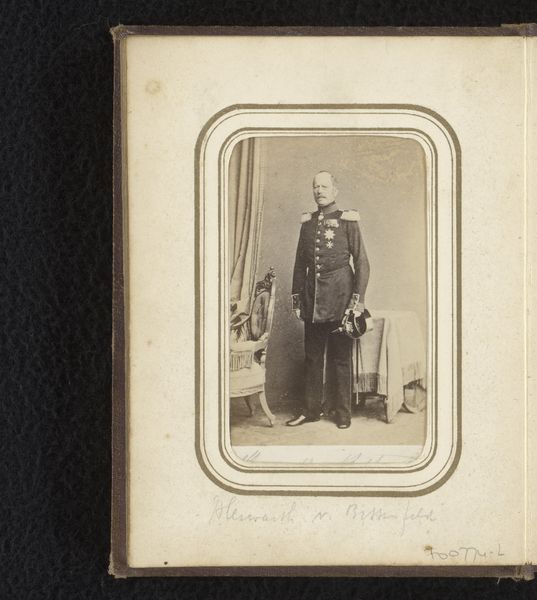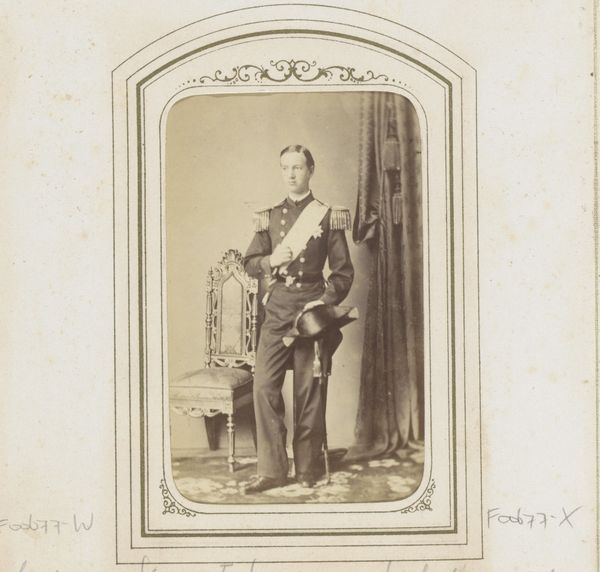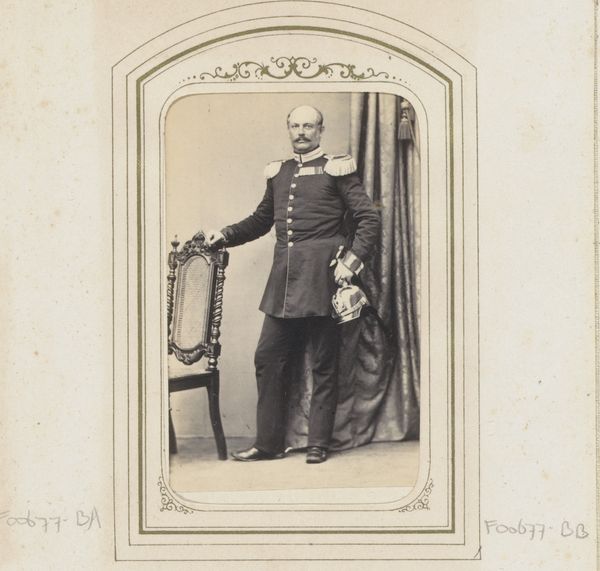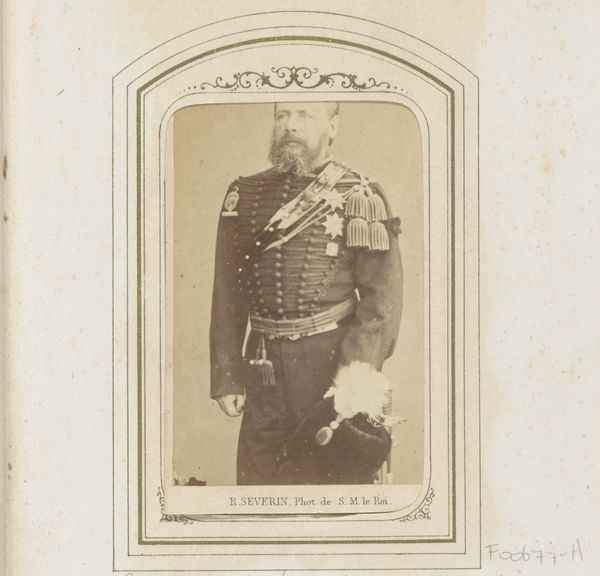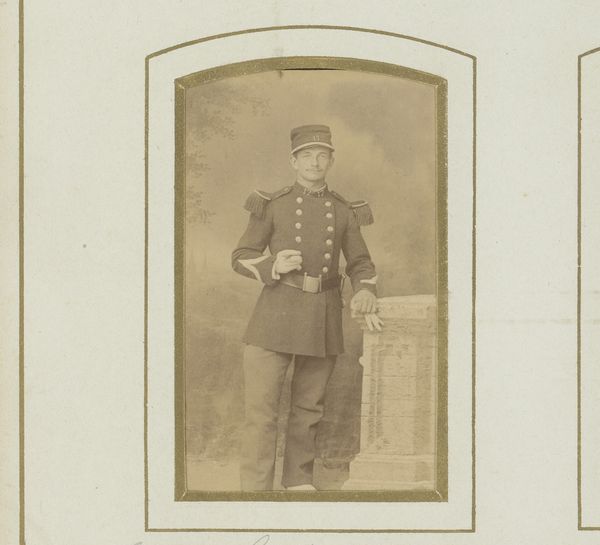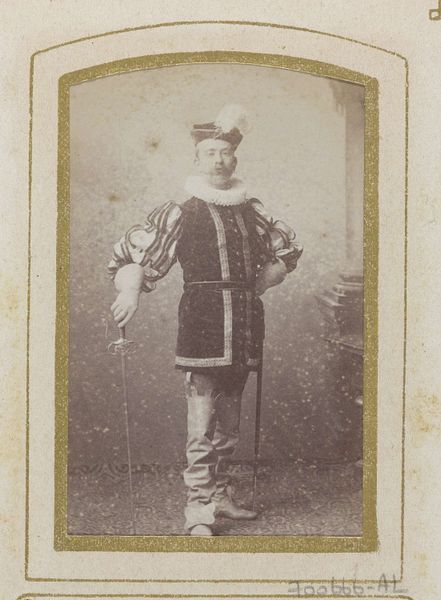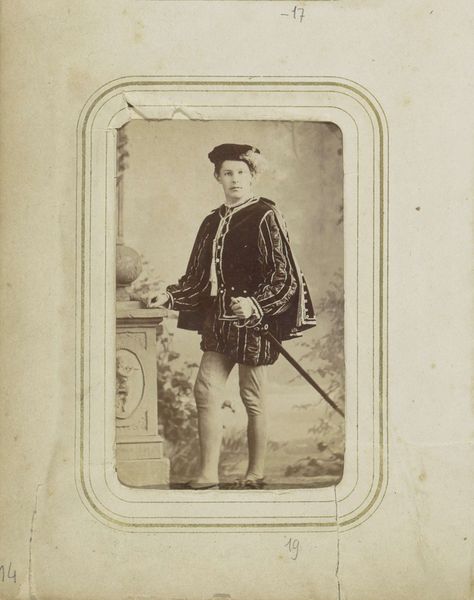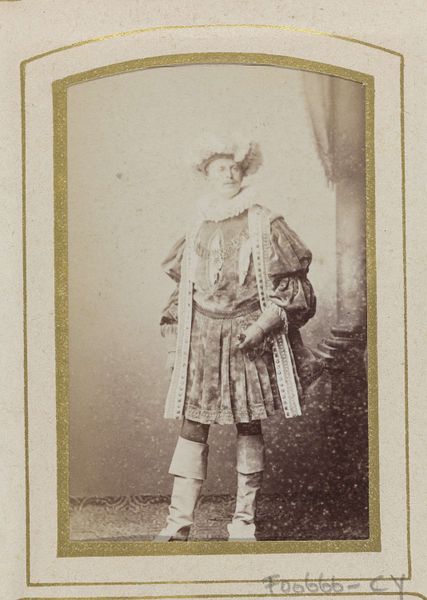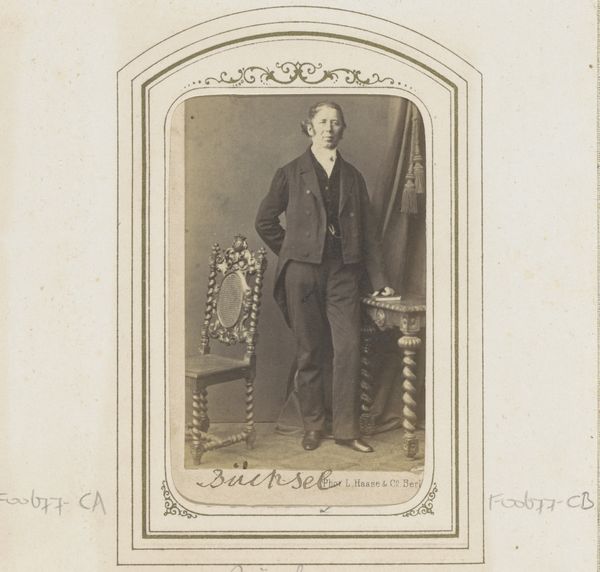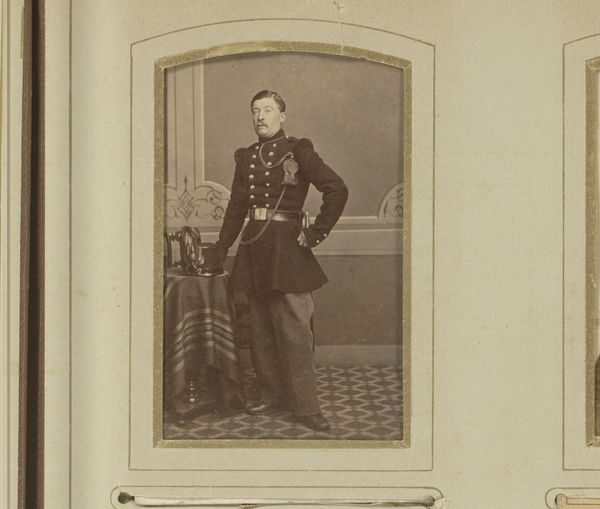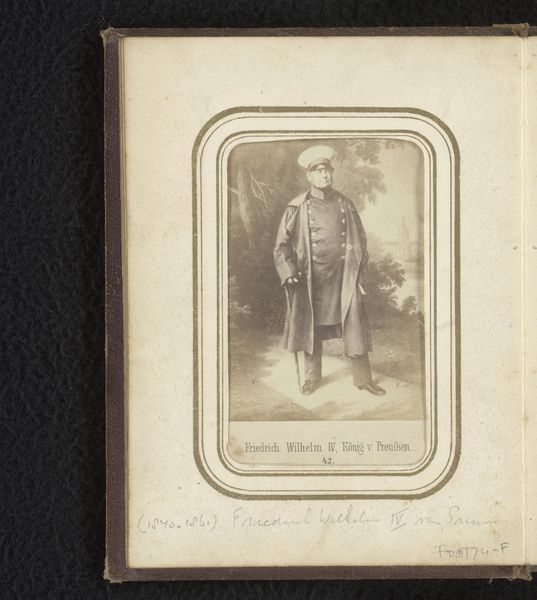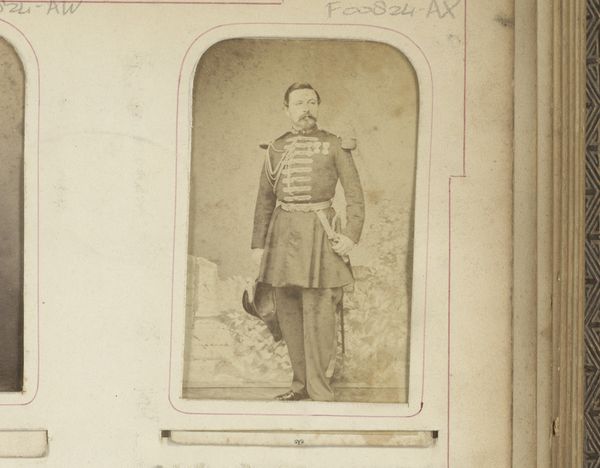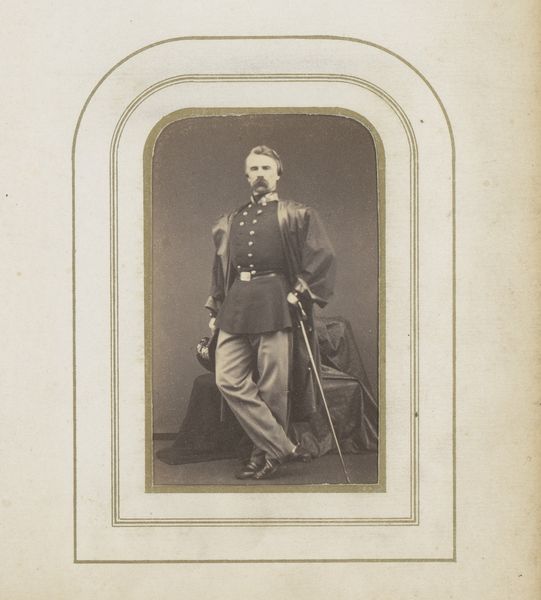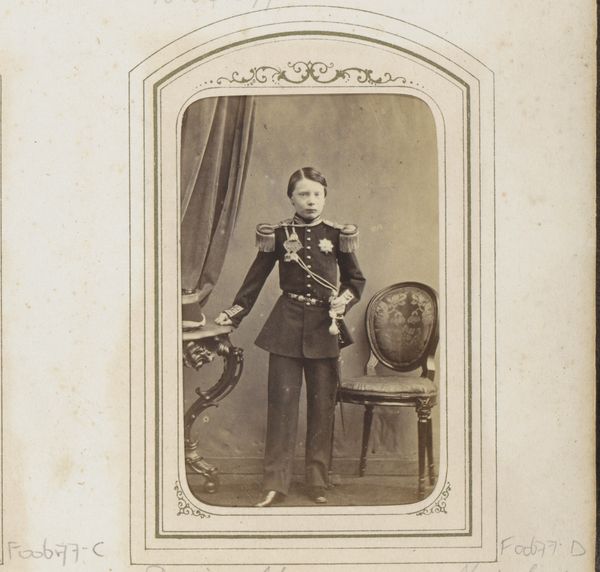
daguerreotype, photography
#
portrait
#
daguerreotype
#
photography
#
historical photography
#
19th century
Dimensions: height 86 mm, width 53 mm
Copyright: Rijks Museum: Open Domain
Curator: What we have here is a photographic portrait of Frederick William IV, King of Prussia. The image, a daguerreotype made by Max Pflaum, dates from between 1845 and 1861. Editor: It's kind of austere, isn’t it? That steely gaze… I bet that’s how he reviewed his troops or dismissed court jesters! Seriously though, it conveys a distinct feeling of controlled power. Curator: The power dynamic is very much the point, I think. He's presented in full military regalia. The image really reinforces the king's authority. Editor: Sure, but it also feels very…still. Photography was relatively new then, wasn't it? Makes you wonder about the process—how long did he have to hold that pose? What was going through his mind? Did he think "cheese"? Curator: It does speak to the technological moment. As a daguerreotype, it represents an important chapter in the history of photography and visual culture—a moment where the political utility of capturing the human form intersected with both art and scientific progress. Such portraits solidified the visual vocabulary of power at the time. Editor: Makes me think about portraiture in general—especially royal portraits. Paintings, photos… they're all trying to convey something, manipulate an image. Curator: Exactly. And with Frederick William IV, a figure who dealt with the turbulent political climate leading up to the 1848 revolutions, imagery was crucial in maintaining legitimacy and public image. Photography offered a new, seemingly 'objective' way to assert that image. Editor: Okay, objective might be a stretch. This isn't candid, after all! The pose, the uniform, the meticulously arranged objects nearby…It’s carefully constructed. And, honestly, a little bit tragic in the way it tries to freeze someone in time, define them so rigidly. Curator: Well, whether you find it tragic or a calculated statement of authority, I believe this portrait provides us with a complex intersection of art, power, and historical circumstance worth further exploration. Editor: Right you are. It’s certainly given me food for thought… and an unexpected pang of sympathy for a 19th-century king I've never met!
Comments
No comments
Be the first to comment and join the conversation on the ultimate creative platform.
